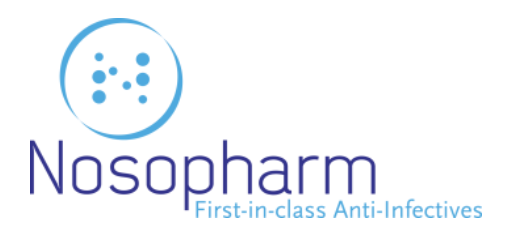Members Login

Channels
Special Offers & Promotions
Nosopharm Renews its Partnership with Inra
 This second screening campaign aims to discover new classes of antimicrobial agents for treating multi-resistant infections
This second screening campaign aims to discover new classes of antimicrobial agents for treating multi-resistant infections
Nosopharm, a company dedicated to the research and development of new anti-infective drugs, announces that it has renewed its partnership with the French National Institute of Agricultural Research (Inra). This partnership with Inra’s Diversity, Genomes and Insects-Microorganisms Interactions laboratory (DGIMI) aims to develop new classes of antimicrobial agents for treating multi-drug resistant hospital-acquired infections. These new classes of antimicrobials will then be the subject of patent applications and scientific publications.
Under the terms of the partnership, Inra grants Nosopharm exclusive access to around 100 unique strains of Photorhabdus and Xenorhabdus. The DGIMI laboratory has the most extensive collection in the world of strains for these two genera of bacteria. When applying its innovative, proprietary methods to the strains in order to discover new bioactive compounds, Nosopharm will capitalize on experience gathered during the first screening campaign.
The aim of this campaign is to discover a new and innovative systemic antimicrobial agent targeting gram-negative pathogens, including Pseudomonas aeruginosa, as well as a new systemic novel antifungal agent targeting Candida spp pathogens.
Led by Nosopharm, the first screening campaign on a collection of unique strains of the bacterial genera Photorhabdus and Xenorhabdus belonging to Inra's DGIMI laboratory, resulted in
- Three patent applications covering three new classes of antimicrobials (EP2468718, WO2012085177, WO2016046409)
- Three articles published in peer-reviewed journals (The Journal of Antibiotics, 2013, Genome Announcements, 2014, Molecular Cell, 2018)
- An oral presentation at the 54th Interscience Conference on Antimicrobial Agents and Chemotherapy (ICAAC)
- The discovery of a new class of antibiotics – odilorhabdins – now at the preclinical stage for the treatment of multidrug-resistant Enterobacteriaceae infections. This new class has been selected to be part of the European ND4BB ENABLE consortium.
“We are delighted to be working with Inra again to discover new classes of antimicrobial agents. The exclusivity we have been granted gives us a major competitive advantage," said Philippe Villain-Guillot, CEO of Nosopharm. "With this second screening campaign, we are aiming to discover a new antibacterial molecule against Pseudomonas aeruginosa, as well as a novel antifungal agent. In the longer term, the microbial agents discovered during this partnership could be co-developed with biotechnology firms or pharmaceutical laboratories.”
"Bacteria of the genera Xenorhabdus and Photorhabdus are insect pathogens and nematode symbionts; today they are also recognized for their marked ability to produce many bioactive molecules with antimicrobial activity (antibacterial and antifungal). Since the 1980s, our laboratory (DGIMI-UMR Inra-UM1333) has nurtured a collection of these bacteria, which now comprise 650 strains, originating over the five continents. Since 2016, this collection has been associated with the ‘environment’ pillar of the center RARe – Agronomic Resources for Research," said Alain Givaudan, deputy director of Inra's DGIMI unit. "With Nosopharm, we are prioritizing research into small molecules of natural origin. The molecules are biosynthesized within the bacteria thanks to large enzyme complexes (called ‘nonribosomal peptide synthetases’ or ‘NRPS’), which are true biological microfactories with unusually long genes by design and are prominent in the Xenorhabdusand Photorhabdus genomes.”
Media Partners


